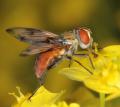Diptera.info :: Identification queries :: Diptera (eggs, larvae, pupae)
Who is here? 1 guest(s)
|
larva making foam on capitula of Senecio
|
|
| Louis Boumans |
Posted on 24-07-2008 21:24
|
|
Member Location: NO Oslo Posts: 269 Joined: 09.06.04 |
I noticed that the ripe capitula of the Senecio jacobae (maybe now called Jacobaea vulgaris) in my garden all have a topping of white foam, which is now dry and solidified. I opened one capitulum and found a dipteran larva as expected, presumably a tephritid. Several tephritidae are known from this plant, Sphenella marginata perhaps being the commonest. My question: is the foam indeed produced by the larva, is it species-specific behaviour and may it help to identify the larva? is this common for tephritids in flower heads, or could it be related to the toxicity of this plant? thanks in advance, Louis Louis Boumans attached the following image: 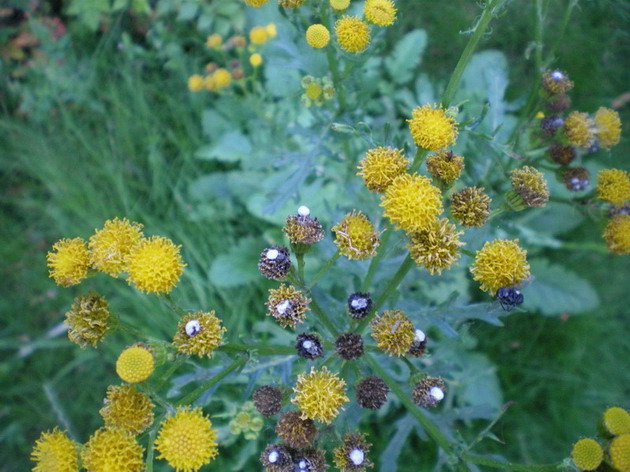 [115.98Kb] Edited by Louis Boumans on 04-08-2008 18:07 |
|
|
|
| Nosferatumyia |
Posted on 25-07-2008 07:09
|
|
Member Location: Posts: 3533 Joined: 28.12.07 |
It looks more like to be damaged by Pegomyia (Anthomyidae) : Sphenella just do not form such a foam capsulae. The easiest way is to collect some of the infested flower heads. Pegomyia pupates in soil leaving heads (pupae ochreous or orange), whereas Sphenella marginata pupates in the head (puparium bean-like, shinig dorsally & matt ventrally, BLACK).
Val |
|
|
|
| Louis Boumans |
Posted on 26-07-2008 00:11
|
|
Member Location: NO Oslo Posts: 269 Joined: 09.06.04 |
Thank you for this interesting information, I'll try to obtain the pupae, and perhaps I manage to rear them!
Edited by Louis Boumans on 26-07-2008 00:13 |
|
|
|
| Louis Boumans |
Posted on 04-08-2008 18:13
|
|
Member Location: NO Oslo Posts: 269 Joined: 09.06.04 |
They did indeed pupate in the soil. Is it possible to say which Pegomyia species it is on the basis of the host plant? Valery, do you happen to know if this pegomya has several generations per year? Or should I have the pupae overwinter before they eclose? (Some pupae have darkened already, which doesn't look promising..) thanks in advance, Louis Louis Boumans attached the following image:  [51.34Kb] Edited by Louis Boumans on 04-08-2008 18:17 |
|
|
|
| cebe |
Posted on 06-08-2008 14:01
|
|
Member Location: Posts: 99 Joined: 16.05.06 |
I'm also interested to know the answer. I have this 'spit' on many Senecio jacobaea-flowerheads (end of july). Inside the flower I found this white larvae, 4 mm in length... Bart, Brussels 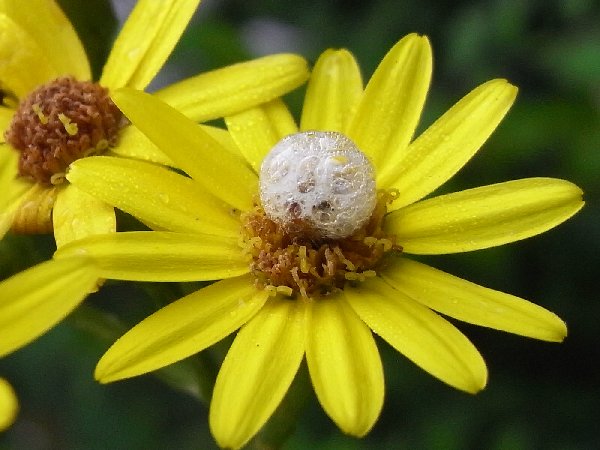 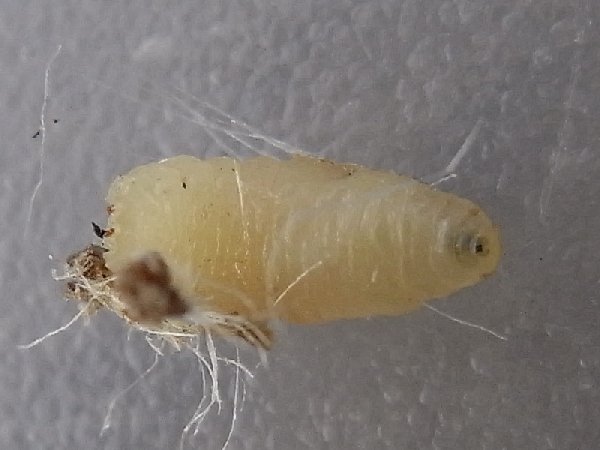 |
| Louis Boumans |
Posted on 08-08-2008 17:47
|
|
Member Location: NO Oslo Posts: 269 Joined: 09.06.04 |
Must be the same .. except that the forms of Senecio are different. |
|
|
|
| Nosferatumyia |
Posted on 08-08-2008 21:40
|
|
Member Location: Posts: 3533 Joined: 28.12.07 |
Pupae are of Pegomyia sp. I had no succcess in rearing them, as they overdried. Certainly they overwinter in soil before emerging.
Val |
|
|
|
| Louis Boumans |
Posted on 17-08-2008 22:44
|
|
Member Location: NO Oslo Posts: 269 Joined: 09.06.04 |
Thanks Valery! |
|
|
|
| Louis Boumans |
Posted on 24-08-2008 17:24
|
|
Member Location: NO Oslo Posts: 269 Joined: 09.06.04 |
Indeed, when I wanted to show a Pegomyia larva to a friend, I opened a capitulum of the same plant individual and found the smaller, bean-shaped pupa of Sphenella marginata!
Louis Boumans attached the following image: 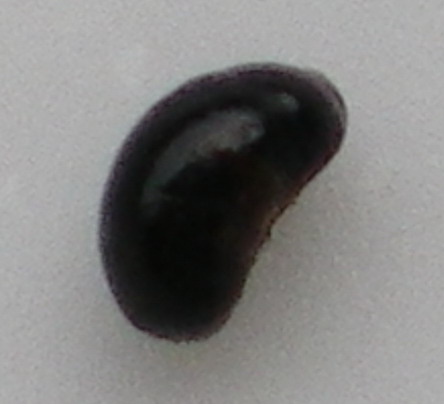 [31.76Kb] Edited by Louis Boumans on 24-08-2008 17:25 |
|
|
|
| Louis Boumans |
Posted on 24-08-2008 17:26
|
|
Member Location: NO Oslo Posts: 269 Joined: 09.06.04 |
from the 'ventral' ? side of the pupa
Louis Boumans attached the following image:  [41.51Kb] |
|
|
|
| cebe |
Posted on 27-07-2010 22:33
|
|
Member Location: Posts: 99 Joined: 16.05.06 |
Still have them... Found this info: «Pegohylemyia jacobaeae Ragwort seed fly (Anthomyiidae) Larvae predatory on other fly larvae in flower heads of Senecio erucifolius & S. jacobaea. [genus may be cited as Botanophila] Pegohylemyia seneciella (fly, Anthomyiidae) Larvae in flower heads of Senecio jacobaea, producing a cone of froth, which dries, in the middle of the flower. Found where Ragwort plants are few; in large stands there is greater probability of predation by Pegohylemyia jacobaea.» in http://www.buglife.org.uk/conservation/currentprojects/Habitats+Action/Ragwort/ragwortfactfile (Fauna Europaea uses «Botanophila») Bart Edited by cebe on 27-07-2010 22:41 |
| Jump to Forum: |











